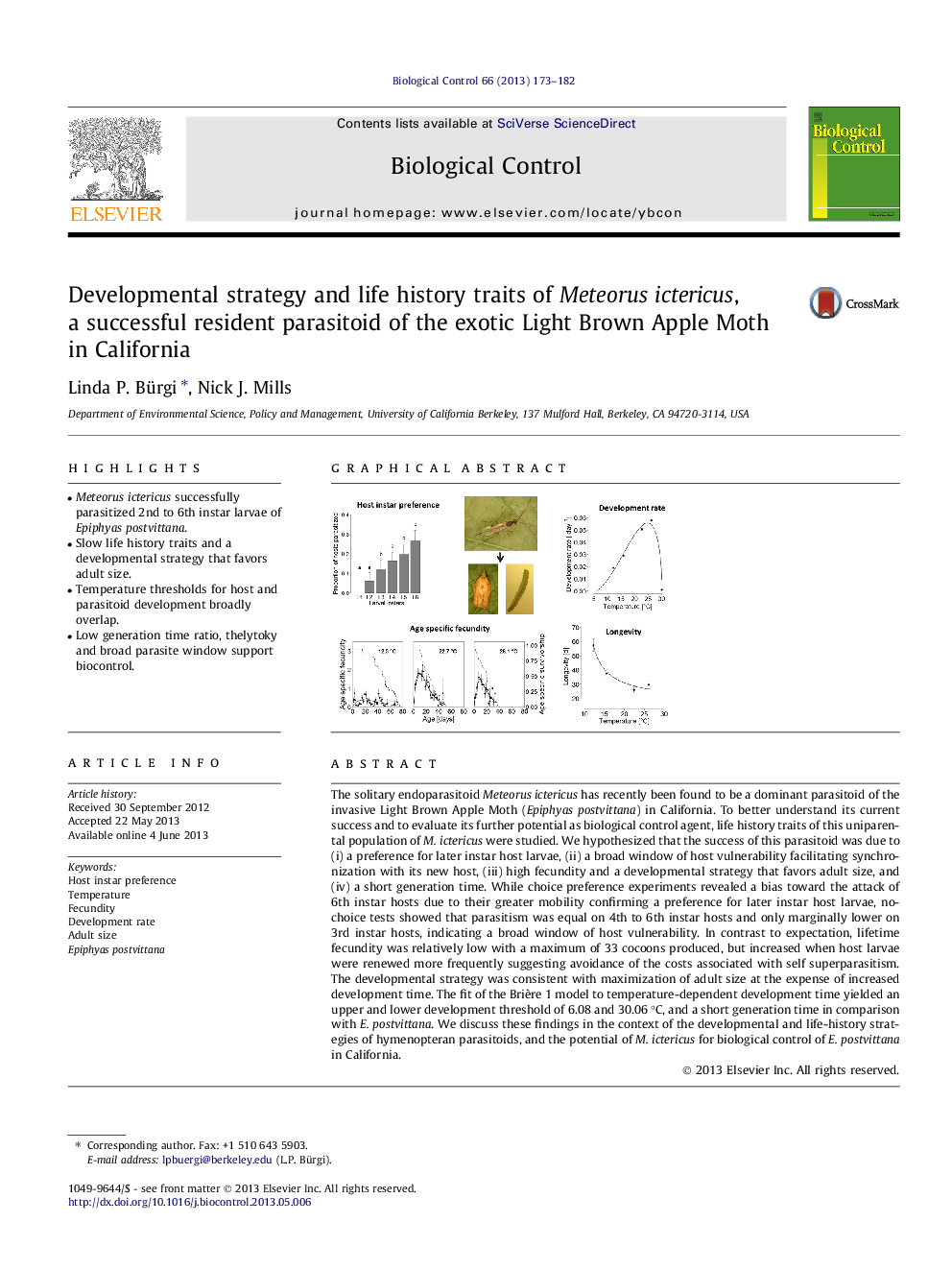| کد مقاله | کد نشریه | سال انتشار | مقاله انگلیسی | نسخه تمام متن |
|---|---|---|---|---|
| 6372722 | 1321055 | 2013 | 10 صفحه PDF | دانلود رایگان |

- Meteorus ictericus successfully parasitized 2nd to 6th instar larvae of Epiphyas postvittana.
- Slow life history traits and a developmental strategy that favors adult size.
- Temperature thresholds for host and parasitoid development broadly overlap.
- Low generation time ratio, thelytoky and broad parasite window support biocontrol.
The solitary endoparasitoid Meteorus ictericus has recently been found to be a dominant parasitoid of the invasive Light Brown Apple Moth (Epiphyas postvittana) in California. To better understand its current success and to evaluate its further potential as biological control agent, life history traits of this uniparental population of M. ictericus were studied. We hypothesized that the success of this parasitoid was due to (i) a preference for later instar host larvae, (ii) a broad window of host vulnerability facilitating synchronization with its new host, (iii) high fecundity and a developmental strategy that favors adult size, and (iv) a short generation time. While choice preference experiments revealed a bias toward the attack of 6th instar hosts due to their greater mobility confirming a preference for later instar host larvae, no-choice tests showed that parasitism was equal on 4th to 6th instar hosts and only marginally lower on 3rd instar hosts, indicating a broad window of host vulnerability. In contrast to expectation, lifetime fecundity was relatively low with a maximum of 33 cocoons produced, but increased when host larvae were renewed more frequently suggesting avoidance of the costs associated with self superparasitism. The developmental strategy was consistent with maximization of adult size at the expense of increased development time. The fit of the Brière 1 model to temperature-dependent development time yielded an upper and lower development threshold of 6.08 and 30.06 °C, and a short generation time in comparison with E. postvittana. We discuss these findings in the context of the developmental and life-history strategies of hymenopteran parasitoids, and the potential of M. ictericus for biological control of E. postvittana in California.
Journal: Biological Control - Volume 66, Issue 3, September 2013, Pages 173-182